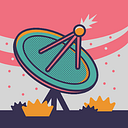How to start a journey as Flutter Developer?
Being a Flutter developer for the first time can be a thrilling and gratifying experience. A well-liked framework for creating cross-platform mobile applications is Flutter.
To get you started, follow these steps:
- Learn Dart Programming Language:
Dart is the programming language used for Flutter development. Start by learning Dart, as it will be essential for writing Flutter apps. Here are the key topics you should cover when learning Dart as a Flutter developer:
- Basic Syntax: Learn the fundamentals of Dart’s syntax, including variables, data types (int, double, String, bool), and basic operators (+, -, *, /, %).
- Control Flow: Understand control flow statements such as if-else, switch, and loops (for, while, do-while) for making decisions and iterating through data.
- Functions: Master the creation and usage of functions in Dart,
including function parameters, return values, and anonymous functions (lambda expressions). - Lists and Collections: Learn how to work with lists (arrays), maps (key-value pairs), and sets in Dart. Explore common operations like adding, updating, and removing elements.
- Object-Oriented Programming (OOP): Understand the principles of OOP, including classes, objects, constructors, inheritance, encapsulation, and polymorphism. Dart is an object-oriented language, and OOP is essential for Flutter development.
- Exception Handling: Learn how to handle exceptions and errors in Dart using try-catch blocks and how to throw custom exceptions when needed.
- Asynchronous Programming: Dart supports asynchronous programming with async and await keywords. Explore how to work with Future and Stream objects to handle asynchronous operations, such as network requests.
- Generics: Understand generics in Dart, which enable you to write type-safe code and create reusable classes and functions.
- Packages and Libraries: Learn how to import and use external packages and libraries in Dart. Familiarize yourself with the pub package manager for managing dependencies.
- File I/O: Explore file input and output operations in Dart, including reading and writing files.
- Concurrency: Get a basic understanding of isolates and how Dart handles concurrency. Dart uses isolates for parallelism, which is important for performance in Flutter apps.
- Testing: Learn how to write unit tests and perform testing in Dart using tools like the test package. Testing is crucial for maintaining code quality.
- Dart DevTools: Explore Dart DevTools, a suite of debugging and performance tools that can help you analyze and optimize your Flutter applications.
- Functional Programming Concepts: While not mandatory, understanding functional programming concepts like map, reduce, filter, and lambda expressions can be helpful when working with Dart and Flutter.
2. Install Flutter and Set Up Your Development Environment:
- Visit the official Flutter website (https://flutter.dev/) to download and install Flutter for your specific platform (Windows, macOS, Linux). Follow the installation guide to set up your development environment properly.
3. Use an IDE or Code Editor:
Flutter can be developed using various integrated development environments (IDEs) or code editors. Some popular choices include Visual Studio Code (VS Code) with Flutter and Dart extensions, Android Studio, or IntelliJ IDEA with the Flutter plugin. Choose the one you are most comfortable with.
4. Explore Flutter Basics:
- Start by exploring the basics of Flutter, such as widgets, layouts, and the widget tree. The Flutter documentation and official tutorials are excellent resources for learning these fundamentals.
5. Build Simple Apps:
- Begin by building small, simple apps to practice what you’ve learned. Start with Flutter’s “Hello World” app and gradually move on to more complex projects. This hands-on experience will help you gain confidence and skills.
6. Learn State Management:
- Understanding how to manage the state of your Flutter applications is crucial. Flutter provides various state management solutions like Provider, Redux, and Bloc. Explore these options and choose one that fits your project’s needs.
7. UI/UX Design:
- Familiarize yourself with Flutter’s powerful UI toolkit. Learn how to create custom widgets and implement attractive and user-friendly designs.
8. API Integration:
- Practice integrating APIs into your Flutter apps. Building apps that fetch data from APIs will help you understand how to work with real-world data in your applications.
9. Version Control:
- Learn how to use version control systems like Git. Git is essential for collaborating with others and managing your codebase efficiently.
10. Join the Flutter Community:
- Join online communities and forums like the Flutter subreddit, Stack Overflow, and the Flutter Discord channel. Engaging with the community can help you learn from experienced developers and get solutions to your problems.
- Join the Flutter Community:
- Join online communities and forums like the Flutter subreddit, Stack Overflow, and the Flutter Discord channel. Engaging with the community can help you learn from experienced developers and get solutions to your problems.
